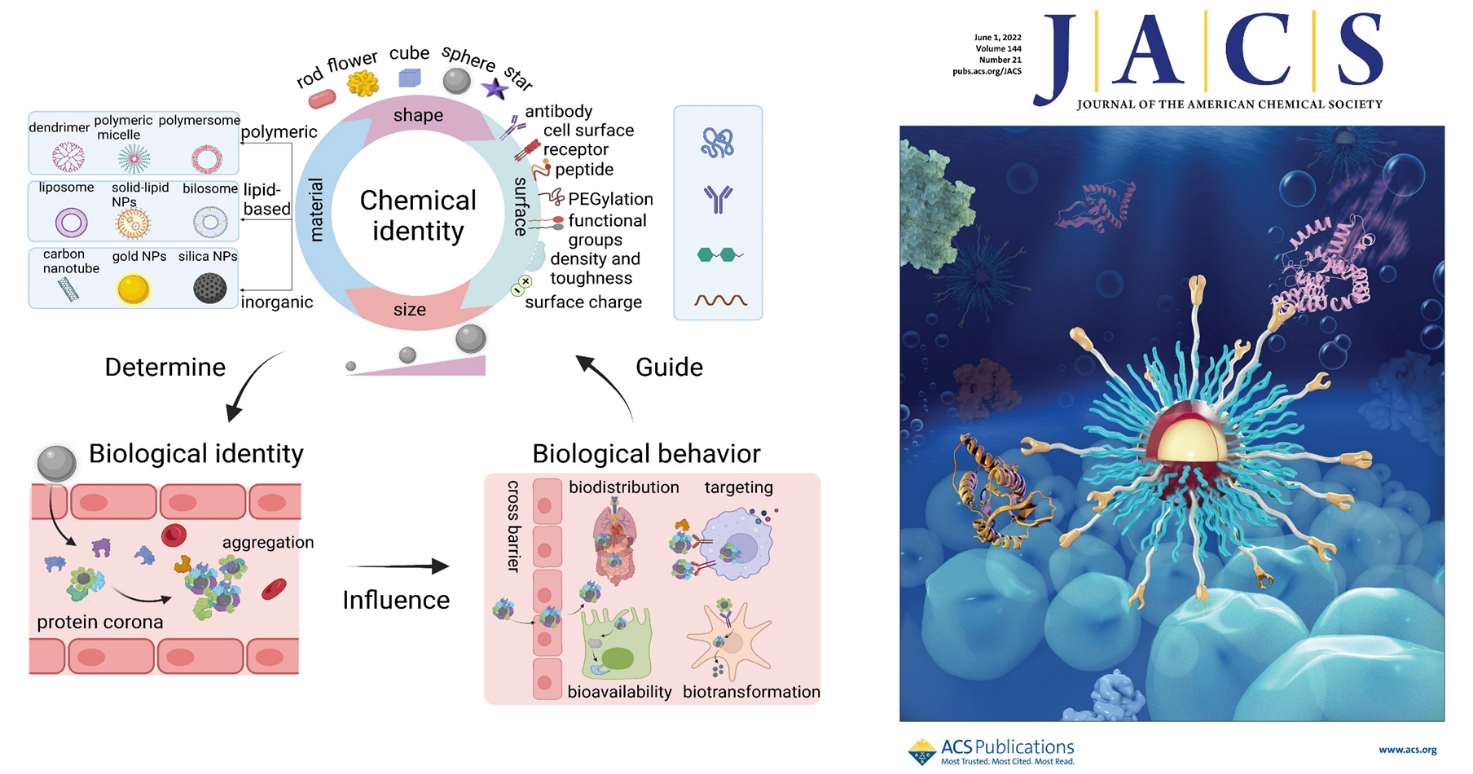Reviewed by Danielle Ellis, B.Sc.Jun 3 2022
Professor Chunying Chen of the Chinese Academy of Sciences’ (CAS) National Center for Nanoscience and Technology (NCNST) has been studying the chemical and biophysical characteristics of protein corona in nanomedicine.
 The chemical identity of nanoparticles affect their protein corona properties, which in turn determine their biological identity and influence subsequent biological behavior. Image Credit: Chunying Chen, et al.
The chemical identity of nanoparticles affect their protein corona properties, which in turn determine their biological identity and influence subsequent biological behavior. Image Credit: Chunying Chen, et al.
Their article was published in the Journal of the American Chemical Society.
Once within the body, the nanoparticles’ surface will soon adsorb protein molecules, forming a “nano-protein corona.” The existence of protein corona will alter and govern nanoparticle behavior in the organism, as well as their metabolic processes and ultimate fate in vivo, and so affect nano pharmaceutical biomedical function.
Nanomaterials and their physicochemical features, such as size, structure, crystal form and kind of surface-modified molecules, electrical charge, chirality, and others, influence the development of the protein corona. At the same moment, these characteristics will influence the site of biomolecule-nanomaterial contact, molecular orientation, and biological activity.
The research group has designed isotope labeling, synchrotron radiation scientific devices, spatial multi-omics methods, and other highly sensitive and strong in situ quantitative techniques to demonstrate the adsorption law as well as chemical biological characteristics of nano-protein coronas in recent times.
The researchers examined the complicated interaction between nanoparticles and their biological microenvironments in this publication. They reviewed the chemical and bio-physiological properties of nano-protein coronas, as well as the most recent analytical approaches for measuring protein corona abundance, composition, and transformation.
They also emphasized the process of various serum proteins enabling precisely targeted administration by elaborating nanoparticles via cell and paracellular absorption pathways controlled by the protein corona.
Finally, the researchers addressed how the chemical features of nano-protein coronas may be used to guide the development of effective and safe nanomedicines.
Source:
Journal reference:
Ren, J., et al. (2022) Chemical and Biophysical Signatures of the Protein Corona in Nanomedicine. Journal of the American Chemical Society. doi.org/10.1021/jacs.2c02277.